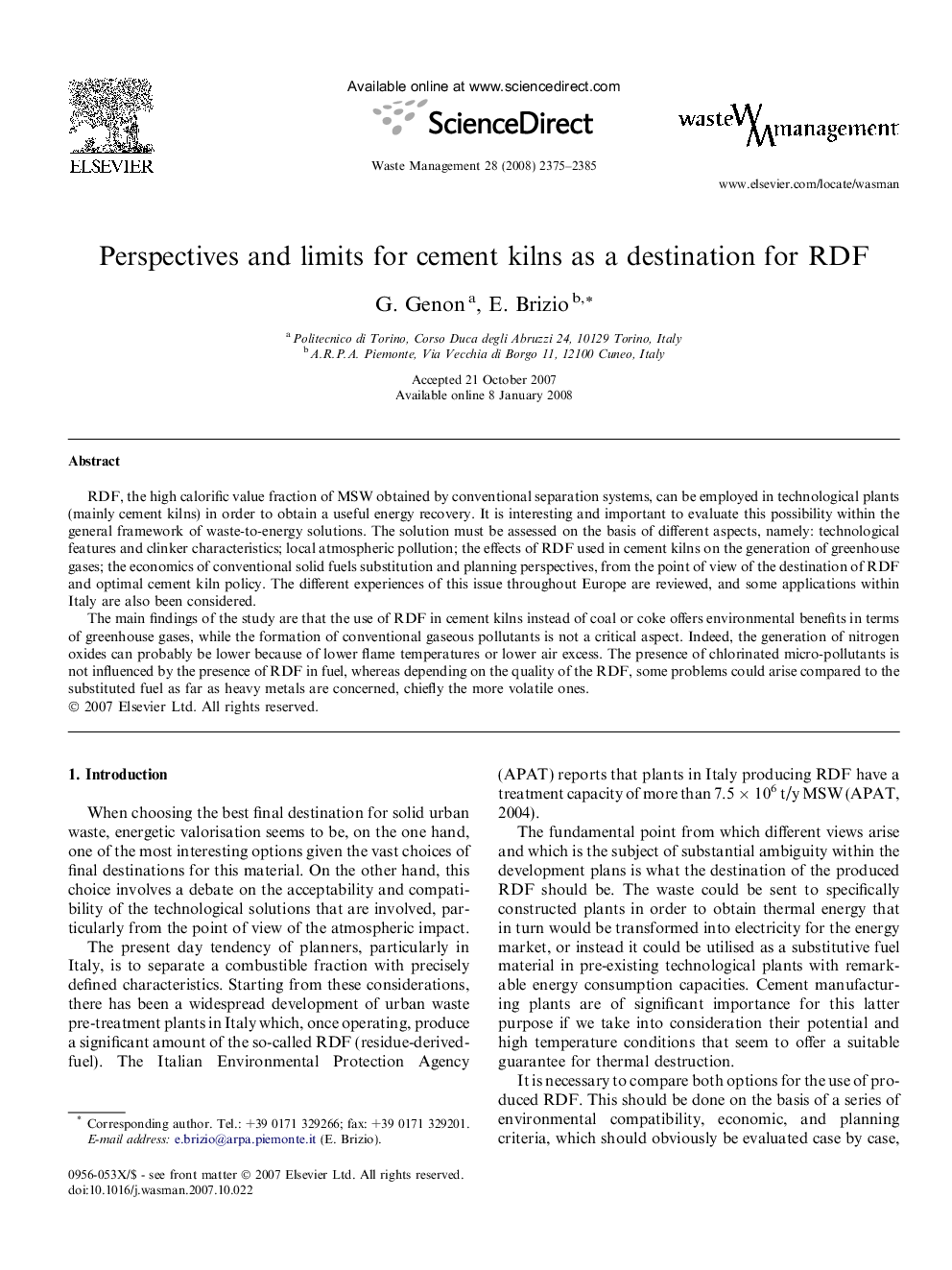| Article ID | Journal | Published Year | Pages | File Type |
|---|---|---|---|---|
| 4473500 | Waste Management | 2008 | 11 Pages |
RDF, the high calorific value fraction of MSW obtained by conventional separation systems, can be employed in technological plants (mainly cement kilns) in order to obtain a useful energy recovery. It is interesting and important to evaluate this possibility within the general framework of waste-to-energy solutions. The solution must be assessed on the basis of different aspects, namely: technological features and clinker characteristics; local atmospheric pollution; the effects of RDF used in cement kilns on the generation of greenhouse gases; the economics of conventional solid fuels substitution and planning perspectives, from the point of view of the destination of RDF and optimal cement kiln policy. The different experiences of this issue throughout Europe are reviewed, and some applications within Italy are also been considered.The main findings of the study are that the use of RDF in cement kilns instead of coal or coke offers environmental benefits in terms of greenhouse gases, while the formation of conventional gaseous pollutants is not a critical aspect. Indeed, the generation of nitrogen oxides can probably be lower because of lower flame temperatures or lower air excess. The presence of chlorinated micro-pollutants is not influenced by the presence of RDF in fuel, whereas depending on the quality of the RDF, some problems could arise compared to the substituted fuel as far as heavy metals are concerned, chiefly the more volatile ones.
